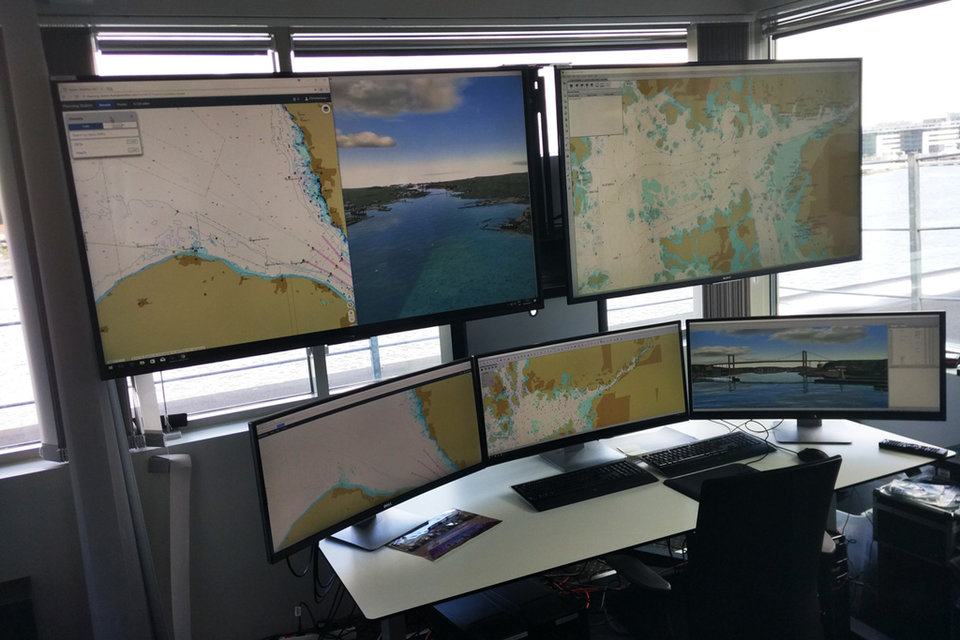Navigation
Managing traffic in the Baltic Sea
Finnish firm Wärtsilä has been contracted to upgrade the route-sharing systems of 50 tankers active in the Baltic Sea. The installations form part of BALT SAFE, an EU-supported project based around the concept of sea traffic management. The end goal is safer and more efficient shipping in the region, as Ross Davies reports.
Image:
Accounting for 15%
of the world’s cargo traffic, the Baltic Sea is a hive of maritime activity.
Mainly carrying dry bulk, around 2,000 ships can be found passing through its narrow straits at any given time, according to the Helsinki Commission, an intergovernmental body.
And its waterways are getting even busier, thanks to a steep rise in the transportation of oil. The region’s growing popularity as a cruise destination has also led to a greater prevalence of passenger ships ploughing new routes in recent years.
This has raised concerns around the higher risk of accidents at sea. The National Audit Office of Finland (NAOF) claims an accident involving a tanker would result in a spill of between 50,000 and 60,000 tonnes. The clean-up costs resulting from such an incident would be around €650m, believes NAOF.
The Baltic states are therefore keen to ensure the fluency of cargo at sea does not come at the expense of safety. For this to happen, the efficient exchange of information between ships and ports is vital.
STM BALT SAFE: managing sea traffic
Last year saw the launch of the Safety of Navigation in the Baltic Sea by Sea Traffic Management project (STM BALT SAFE), whose central aim is to enable tankers to send and receive voyage information with other ships and regional authorities.
Supported by the European Commission, the project – which will run until June 2021 – is being led by the Swedish Maritime Administration, partnered by its Norwegian, Finnish and Estonian counterparts. The budget is valued at €4.38m.
The project’s budget is valued at €4.38m
In April, it was announced that Finnish firm Wärtsilä had been contracted to upgrade the navigation and route-sharing systems of 50 tankers currently operating in the Baltic Sea.
As part of STM BALT SAFE, the vessels will have their electronic chart display and information systems (ECDIS) upgraded in order to comply with sea traffic management – the concept that underpins the entire project.
Lessons from air traffic management
STM was first devised by the Swedish Maritime Administration for the MONALISA 2.0 project (2013-2015), which looked at real-time route exchange as a means of improving operations and interactions among ships. The model is essentially a maritime equivalent of the air traffic management system (ATM) found in aviation.
“We had a lot of expertise from the European ATM sector assisting in drawing up the concept,” says STM BALT SAFE project manager Ulf Siwe.
We had a lot of expertise from the European ATM sector assisting in drawing up the concept
“Their experience prevented us from implementing ideas before having a solid framework design in place. Some parts and concepts came directly from the SESAR [Single European Sky ATM Research] programme, including system-wide information management and airport collaborative decision-making.”
STM BALT SAFE’s central aim is to improve the safety of vessels through the delivery of digital vessel traffic services (VTS) to fleets. The goal is that VTS systems around the Baltic Sea will be able to securely share all routes with vessel operators, facilitating cross-checking of routes with alerts sent out in the event of a high-risk scenario.

Wärtsilä’s electronic route exchange system will be installed on 50 tankers as part of the Balt Safe project. Image: Wärtsilä
When will Wärtsilä’s technology be installed?
Information is transferred through an automatic identification system (AIS), while data is interchanged between ships and shore via the maritime digital infrastructure. Having already equipped 129 vessels with STM-compliant ECDIS, Wärtsilä “had the best offer” for the system upgrades, says Siwe.
“Wärtsilä has a tech edge over other providers, having already provided ECDIS solutions during the STM Validation project,” he says. “They have a base solution in place, so the updates of ECDIS software in STM BALT SAFE compared to the original version are minor. There was only one credible provider of the infrastructure platform.”
Wärtsilä has not yet had the chance to carry out its onboard installations as a result of the coronavirus pandemic, although Siwe is confident that the technology will be in place by the end of the year, as the world begins to emerge from lockdown.
Wärtsilä has a tech edge over other providers
“The coronavirus situation has hampered meetings,” he says. “In the case of Wärtsilä, they need to make installations onboard, which has not been possible. However, with more and more countries starting to open up, we believe that the installations will be ready this year, according to plan.”
Cross-industry collaboration is at the heart of STM BALT SAFE. All services in the project are set to use the maritime digital infrastructure developed by Navelink, a new non-profit STM consortium set up by Wärtsilä and fellow local tech firms Kongsberg and Saab.
And when Wärtsilä’s electronic route exchange platform is up and running, project partners will have a trove of data at their disposal. Siwe and his colleagues hope that this more reliable and efficient data exchange will help to reduce waiting times for port calls and enable a culture of just-in-time shipping in the region.
When applied to ports, successful sea traffic management could also lead to significant savings across the transportation chain, with enhanced predictability promising port and ship operators’ sizeable economic gains. But most importantly, sea traffic management will ensure tankers operating in the Baltic Sea are safer. There is no greater priority.